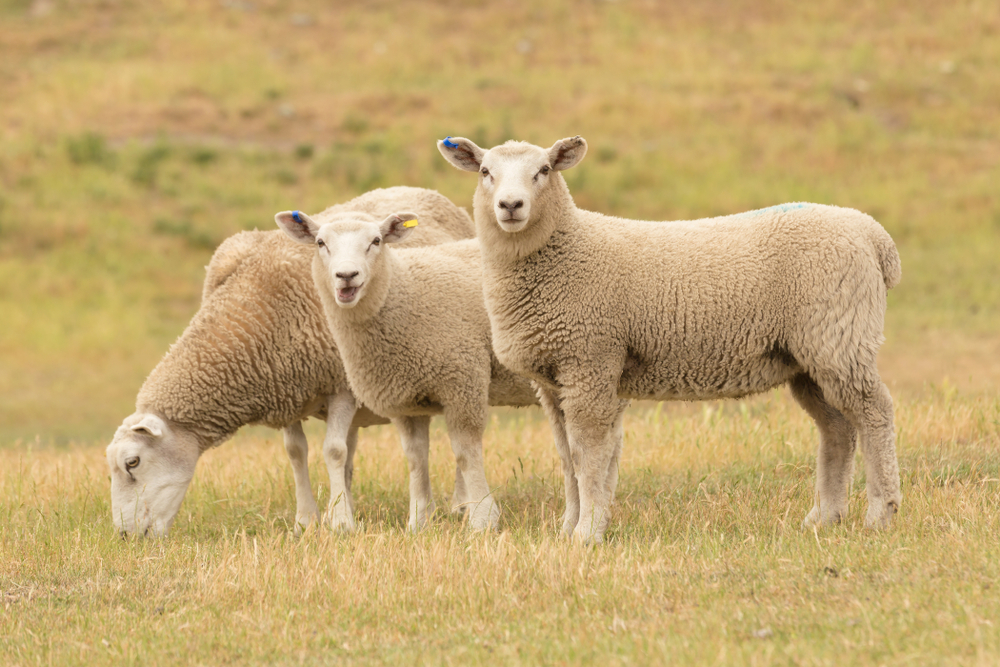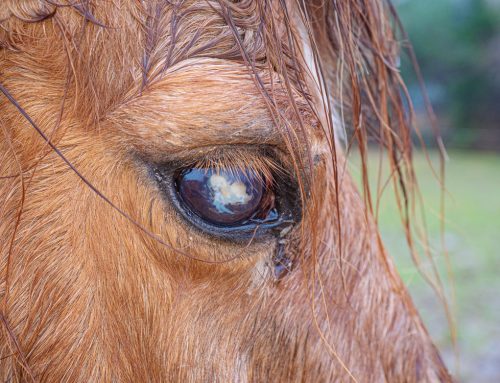Sheep have a narrow safety margin between their copper requirements and toxic levels, which makes them highly susceptible to copper toxicity. Our Leatherstocking Veterinary Services team offers information about this condition and explains how you can protect your flock.
Copper metabolism in sheep
Copper is a required mineral for all farm animals, including sheep. Copper metabolism is influenced by several factors, including breed, age, health status, other minerals consumed, and feed additives, but down type, medium wool sheep of British or European origin generally are most susceptible to copper toxicity. Fine-wool type sheep have intermediate susceptibility, and Finnsheep animals are least susceptible. The amount of molybdenum and sulfur in the diet also affects copper metabolism in sheep. These compounds bind to copper to prevent gastrointestinal (GI) absorption and increase absorbed copper excretion in the liver and body tissues. In addition, feeding ionophores, such as monensin and lasalocid, can increase copper absorption efficiency in sheep. Sheep typically need four to eight ppm of copper in their diet, but sheep diets of 80% mixed hay and 20% grain often have copper levels 14 to 15 ppm without added copper, so copper toxicity is clearly a problem. Sheep fed molybdenum levels of three ppm can usually tolerate 20 to 25 ppm copper.
Copper toxicity forms in sheep
Two distinct copper toxicity syndromes in sheep are recognized:
- Acute copper toxicity — Acute copper toxicity occurs when sheep ingest high copper feeds, copper salts, pesticides, poultry litter, or other high copper substances. A 20 to 100 mg/kg copper intake typically results in acute copper toxicity.
- Chronic copper toxicity — Chronic copper toxicity occurs when sheep ingest high copper levels over time, but at doses below the acutely toxic level.
Feed is the most common source of copper toxicity and feeding sheep mineral supplements intended for cattle is the most common mistake. Some feeds are naturally high in copper, and sometimes producers accidentally purchase feeds with added copper. In addition, feed mixed or pelleted at a feed mill may inadvertently be contaminated with high copper feeds intended for other livestock species.
Copper toxicity effects in sheep
Sheep are the most susceptible species to chronic copper toxicity because their liver cells have a high copper affinity, and they excrete copper to the bile at an extremely slow rate. This leads to a buildup of copper concentrations in the liver over time. Copper is a strong oxidizing agent, which binds to proteins and is stored in the liver cells. The stored copper causes no damage, but when the sheep are stressed, such as shearing, weather extremes, or transport, the cells can release the copper. Summer is a particularly concerning time of year, because sheep are exposed to stressful excessive heat and sheep exhibitions. Copper that is released into the blood enters red blood cells (RBCs) and causes oxidative injury that can lead to RBC destruction and anemia, and also kidney failure.
Copper toxicity signs in sheep

Many affected sheep are found dead. Other signs include inappetence, weakness, head-pressing, aimless wandering, jaundice (i.e., yellowish tinge to mucous membranes and eyes), red or brown urine, shallow, rapid breathing, and recumbency. Diagnosis is typically based on housing and feeding history, clinical signs, and post-mortem findings. High kidney copper concentrations found post-mortem confirm the diagnosis. Serum copper levels in live animals are unreliable, because the liver is the primary storage site.
Copper toxicity treatment in sheep
Once clinical signs indicating copper toxicity are visible, the flock’s current feed should be withdrawn and tested for copper and molybdenum. Copper can be stored in the liver for up to 18 months, and the current feed is often not the source. Treatment is complicated by economic restrictions and slaughter withholding times for the drugs. Potential treatments include:
- Methylene blue — Noticeable effects typically occur in 15 minutes. Methylene blue is a potential carcinogen, and the FDA recommends withholding slaughter for 180 days.
- Sodium thiosulfate — Sodium thiosulfate should be administered to all at-risk sheep daily for three weeks to facilitate copper removal from the liver. A 24-hour slaughter withdrawal time is recommended.
- Ammonium tetrathiomolybdate — This compound decreases copper absorption and increases removal from the liver. A 10-day slaughter withdrawal is recommended.
- D-penicillamine — This treatment increases copper excretion in the urine. A 21-day slaughter withdrawal is recommended.
- Vitamin C — Vitamin C can counter RBC oxidative damage.
Copper toxicity prevention in sheep
Copper toxicity treatment is often unsuccessful, so prevention is the most practical method for handling this issue. Strategies to decrease copper intake and absorption include:
- Avoid feeding sheep swine or poultry feed, which contain high copper levels.
- Investigate copper levels in beef and dairy products before feeding them to sheep.
- Talk to your feed company representative to ensure the mixers, augers, and feed delivery trucks are cleaned before handling sheep feeds, especially if they mix and handle swine and poultry feeds.
- Avoid grazing sheep on pastures fertilized with swine or poultry waste.
- Consider adding molybdenum to the diet.
If you need advice about your sheep’s dietary requirements, contact our Leatherstocking Veterinary Services team, so we can ensure you are feeding an appropriate copper level.







Leave A Comment